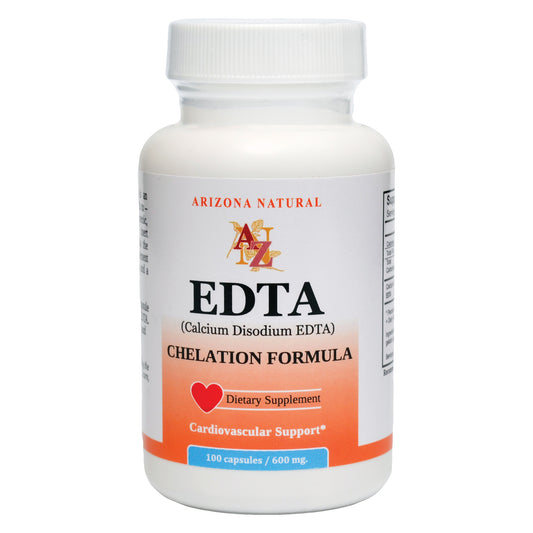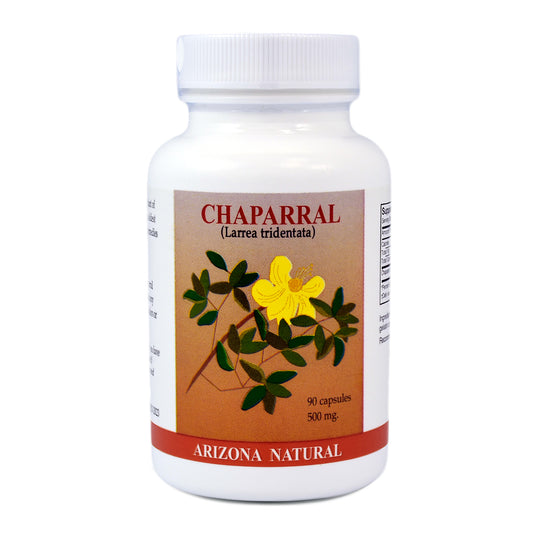
Traditional & Modern Uses of Yucca Root and Chaparral (Larrea tridentata)
Share
For centuries, Native American tribes across the southwestern United States and northern Mexico have relied on the power of nature to heal and sustain their people. Among the countless plants they used in traditional medicine, two stand out for their extensive applications: Chaparral (also called Creosote) and Yucca Root (Yucca schidigera). Both plants were vital to indigenous health practices, and regularly used to treat a variety of ailments. Today, as modern science delves deeper into their properties, a wealth of data supports their use in health and wellness.
Traditional Native American Uses of Chaparral (Larrea tridentata)
Chaparral was a staple in the medicinal practices of Native American tribes like the Pima, Navajo and Cahuilla. They harvested the leaves, stems, and flowers of the plant to address a variety health concerns, many of which are still considered relevant today.
- Wound Healing: The leaves were often crushed into a poultice and applied directly to wounds, cuts, or insect bites to prevent infection and promote healing.
- Respiratory Ailments: Creosote tea made from the leaves was traditionally used to treat respiratory conditions such as coughs, colds, and bronchitis. It was thought to soothe mucous membranes and reduce inflammation.
- Joint Pain and Inflammation: Infusions and salves made from chaparral were used to relieve pain associated with arthritis and rheumatism. The plant's anti-inflammatory properties helped ease the discomfort from chronic joint pain.
- Skin Disorders: Native Americans applied chaparral extracts to treat skin disorders such as eczema, rashes, and fungal infections. Its antiseptic and astringent properties were believed to help clear infections and promote skin health.
Traditional Native American Uses of Yucca schidigera (Yucca Root)
Yucca (Yucca schidigera) was another essential plant in Native American medicine. The root, in particular, was highly valued for its medicinal properties, as well as for its role in hygiene and nourishment.
- Anti-inflammatory Uses: Yucca root was commonly used as a treatment for joint inflammation and pain, much like Chaparral. Native American healers would grind the root into a paste to help alleviate symptoms of arthritis and other joint-related conditions.
- Digestive Health: The root was traditionally used to support digestion and ease issues such as constipation or dysentery. It was used by many tribes to cleanse and soothe the digestive tract.
- Skin and Hair Health: Yucca was used as a natural skin cleanser due to its saponin compounds that helped cleanse the skin and scalp. These saponins also had antimicrobial properties, which contributed to yucca's use in treating skin infections and sores.
- Detoxification: Yucca was thought to help cleanse the body of toxins, making it a common ingredient in both food and medicine for promoting overall health and vitality.
Reviewing Traditional Uses with Modern Science
While Native American medicine largely relied on empirical knowledge passed down through generations, modern scientific studies have begun to substantiate some of the traditional uses of Chaparral (Larrea tridentata) and Yucca Root (Yucca schidigera).
Modern Science on Chaparral (Larrea tridentata)
- Antimicrobial and Antioxidant Properties: Studies have demonstrated that Larrea tridentata contains compounds such as nordihydroguaiaretic acid (NDGA), which has potent antimicrobial and antioxidant effects. These properties explain the plant's traditional use in wound healing and infection prevention. NDGA also has been studied for its potential to inhibit the growth of cancer cells, although more research is needed in this area.
- Anti-inflammatory Effects: Recent research supports chaparral's traditional use in treating inflammation, particularly in conditions like arthritis. Its bioactive compounds show promise in reducing inflammation and oxidative stress, offering a natural alternative to modern anti-inflammatory drugs.
- Anti-viral Activity: Chaparral shows significant antiviral potential, mainly due to its active compound NDGA. In studies, NDGA exhibited inhibitory effects on viral replication, reducing the spread and severity of infection in cell cultures. It may inhibit a range of viruses, including HSV and HIV, and could be a supportive immune modulator.
Modern Science on Yucca schidigera (Yucca Root)
- Anti-inflammatory and Joint Health: Like chaparral, yucca root is rich in saponins, which have been found to possess anti-inflammatory properties. Studies have shown that these saponins may help reduce joint pain and stiffness, particularly in osteoarthritis, making yucca a popular natural joint health supplement.
- Digestive Health Support: Modern research supports the use of yucca in promoting digestive health. Its high fiber content, coupled with saponins, may help support healthy digestion and reduce symptoms of constipation. Additionally, saponins may play a role in modulating gut flora, contributing to a balanced digestive ecosystem.
- Detoxification and Skin Health: Yucca's saponins continue to be used in cosmetic products for their cleansing and antimicrobial properties. Additionally, its detoxifying effects are supported by evidence suggesting that it can help lower blood pressure and reduce cholesterol levels, further promoting overall health.
Bridging Traditional Wisdom and Modern Health Practices
The traditional uses of Chaparral (Larrea tridentata) and Yucca Root (Yucca schidigera) reveal a deep understanding of the natural world and its healing potential. While these plants were used in Native American medicine for centuries, modern research has started to corroborate many of these ancient applications, particularly in the areas of inflammation, antimicrobial activity, antiviral activity, and digestive health.
Whether in supplement form or in topical applications, both Chaparral and Yucca offer valuable health benefits when used responsibly. In the age of modern medicine, these plants serve as reminders of the wisdom of traditional healing practices and the enduring power of nature in promoting wellness.







